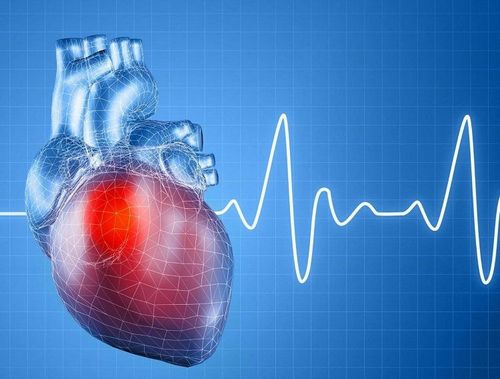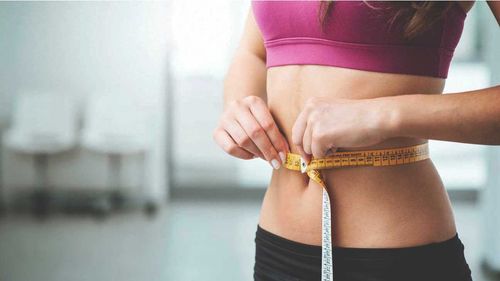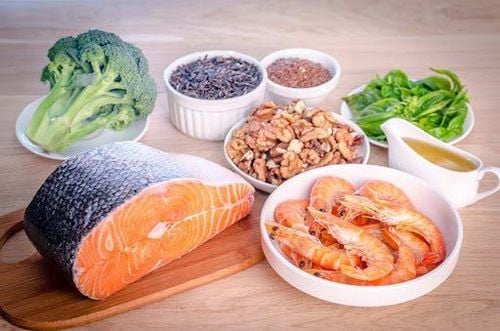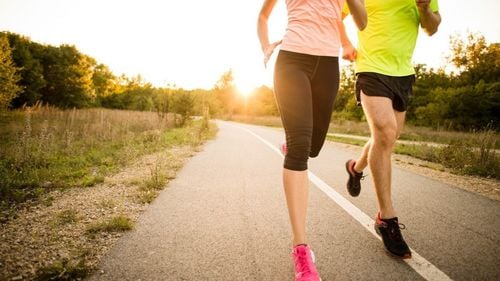This is an automatically translated article.
How many times have you joined an aerobics or aerobics gym? This depends on your goals, aerobic type and commitment to an exercise plan for weight loss. However, you should also know the right aerobic exercise time for you so that it can help you reach your goals sooner.1. Aerobic exercise to lose weight
1 1. Benefits of aerobic exercise Aerobic exercise or commonly known as aerobic exercise helps to regulate the heart. The term aerobic means "with oxygen", which can be understood as the ability to control how much oxygen can reach your muscles to help them burn fuel and serve your body's activities.The benefits of aerobic exercise include:
Improves cardiovascular fitness. Reduced risk of metabolic cardiovascular disease. Hypotension . Raised HDL or "good" cholesterol. Helps to better control blood sugar. Aids in weight management and weight loss. Improve lung function. Lowers resting heart rate. Are exercises with a high degree of safety You should talk to your doctor before starting an exercise program. Ask what restrictions you may have (if any). People with diabetes, high blood pressure, cardiovascular disease, rheumatoid arthritis, chronic obstructive pulmonary disease (COPD), or other health conditions may need additional exercise safety guidelines. Note: If you develop symptoms during exercise including: unusual shortness of breath; chest tightness; chest, shoulder, or jaw pain; lightheadedness; dizzy; confusion; or joint pain, you should stop exercising immediately and contact your physician.
1.2. What are some examples of aerobic exercise that helps with weight loss? Low impact aerobic exercise includes:
Swimming. Cycling. Use an elliptical machine. Go for a walk. Rowing. Use an upper body altimeter (a cardio exercise aid that targets only the upper body). High-impact aerobic exercise includes:
Jogging. Skipping. Do high-impact exercises or step aerobics.

Bơi lội là một trong số những bài tập aerobic tác động thấp
The American College of Sports Medicine recommends a minimum of 3 sessions, totaling 30 minutes of moderate to vigorous exercise to improve cardiovascular and respiratory health and help with weight control. Daily aerobic exercise is appropriate. There's no need to rest between workouts unless you're training at a very high level, such as preparing for a marathon, or if you have joint pain. If joint pain is a limiting factor, it may be appropriate to alternate exercises that are less painful with those that may cause joint pain or to discontinue the painful exercise altogether.
1.4. Heart Rate and Exercise Your heart rate increases in direct correlation with the intensity of the exercise. Heart rate levels can vary considerably from person to person based on the fitness level, genetics, environment, and tolerance for each exercise. If you want a heart rate-based workout, contact your healthcare provider to determine an appropriate range. Certain medications, usually blood pressure medications, control heart rate, making it impossible for many people to determine exercise intensity this way.

Nhịp tim của bạn tăng lên tương quan trực tiếp với cường độ của bài tập
Each aerobics session should also include warm-up and movements. Cool down after completing the exercise. The warm-up phase should not include static stretching, but rather a gradual increase in speed and intensity of the exercise. This allows the body to increase blood flow to the muscles and reduce the chance of muscle injury or damage to the joints. Warm-ups should last 5 to 10 minutes. The cool-down moves will last about the same amount of time as the warm-up, at a decreasing rate. Stretching exercises will be appropriate after aerobic exercise.
Progression to higher exercise intensity should be based on individual exercise tolerance. There are 3 methods to challenge aerobics:
Increase speed. Increases resistance. Increase the duration. Any of these methods, or a combination of them, will improve the fitness of the practitioner. Increasing exercise intensity should be done gradually. You should only challenge yourself for a few minutes at a time.
2. Aerobic Exercises: How to Do It, Benefits, and More
Aerobic exercise is understood as any type of exercise that has the ability to regulate the heart. It may include activities such as brisk walking, swimming, running, or biking.Aerobic exercise is different from anaerobic exercise. Anaerobic exercises, such as weightlifting or sprinting, require a quick burst of energy. They are performed with maximum effort in a short time. This is not the same as aerobics exercises. You do aerobic exercises for a continuous period of time.
Cardio exercises that can be done at home. Besides, these exercises also do not require too many complicated machines. It is important to always warm up 5 to 10 minutes before starting any exercise.
2.1. Jump rope Necessary equipment: Gym shoes (sport shoes), jump rope
Benefits: Jumping rope helps develop better body awareness, hand-foot coordination, agility.
Safety: Your jump rope should be adjusted to your height. Stand with both feet in the center of the rope and extend the handles to the armpits. That is the height you will reach. If the cord is too long, cut or tie it to avoid tripping over it.
Duration and frequency: 15 to 25 minutes and 3 to 5 times per week
Jumping rope is a great activity indoors or outdoors, although it requires a relatively large amount of space . Your workout will take 15 to 25 minutes to complete.

Nhảy dây giúp phát triển nhận thức cơ thể tốt hơn, phối hợp tay chân, nhanh nhẹn
Start by jogging forward while using your hands to bring the rope over your head and under your feet. Do this for 15 seconds. Next, reverse your direction and jog backwards as you continue to bring the rope overhead. Do this for 15 seconds. Finish the set by hopscotch for 15 seconds. To do this move, jump rope in place, and as you jump, alternate between jumping your legs out to the sides and then back to center, similar to how you move them when doing the move. jump jump. Do this for 15 seconds. Rest 15 seconds between sets. Repeat 18 times. If you've been familiar with this form of training before, you can do the moves for 30 seconds and rest for 30 seconds between sets. For athletes, they can do this exercise for 60 seconds at a time, followed by 60 seconds of rest.
2.2. Aerobic heavy exercise Equipment: gym shoes (sneakers), sturdy chair or couch for dipping
Benefits: This exercise promotes heart and cardiovascular health, building strength and toning major muscle groups.
Safety: Focus on proper form with each exercise to avoid injury. Keep your heart rate moderate throughout the exercise. You can continue a short conversation during this exercise.
Duration and frequency: 15 to 25 minutes and 3 to 5 times per week
This aerobic exercise is designed to increase a person's heart rate. Do strength exercises for 1 minute. Then jog or relax in place for 1 minute to give the body an active rest. This counts as one turn. Repeat the same turns 2 to 3 times. You can rest up to 5 minutes between turns.
2.3. Run or jog Equipment: Running shoes
Benefits: Running is one of the most effective forms of aerobic exercise. It can improve heart health, burn fat and calories and improve the mood of exercisers
Safety concerns: Choose well-lit, densely populated routes so if there are any problems happens will immediately receive the help of people around.
Duration and frequency: 20 to 30 minutes, 2 to 3 times per week
If you are a beginner, run for 20 to 30 minutes twice a week. Running speed should be maintained steady throughout the distance. You can alternate between 5 minutes of jogging and 1 minute of walking to start. To avoid injury, always perform stretching exercises after running.

Chạy bộ là một trong những hình thức tập thể dục nhịp điệu hiệu quả nhất
Benefits: Daily walking can reduce the risk of heart disease, obesity, diabetes, high blood pressure and depression.
Safety: Walk in well-lit and densely populated areas. Choose shoes that provide good ankle support to reduce the risk of injury.
Duration and frequency: 150 minutes per week or 30 minutes 5 days a week
If walking is your main form of exercise, aim for 150 minutes per week. You can break this time down into 30 minutes of walking 5 days per week. Or, walk briskly for 10 minutes at a time, 3 times per day.
You can also use the fitness tracker to track the number of steps you take each day. If your goal is to walk 10,000 steps a day, start with your current estimated daily step count and slowly increase your daily step count. You can do this by increasing your daily step count by 500 to 1,000 steps per day every 1 to 2 weeks.
While both aerobic exercise as well as anaerobic exercise have their place in a well-rounded fitness routine, anaerobic exercise such as high-intensity interval training may be more effective for fat loss. If you're combining high-intensity interval training and strength training, keep in mind that total weight loss is not an accurate indicator of progress. With an exercise like this, your body goes through a restructuring process, which means losing fat and adding muscle. To track your progress, measure fat loss instead, as muscle is denser and takes up less space for a given weight.
Hope the above information has provided you with more options and answers, how often should you do aerobic exercise to lose weight? Wish you always have a scientific diet and improve your work productivity and improve your life.
Please dial HOTLINE for more information or register for an appointment HERE. Download MyVinmec app to make appointments faster and to manage your bookings easily.
References: clevelandclinic.org, healthline.com












